6 Ways Brands Can Provide Stellar Customer Service Across Marketplaces

These days, the vast majority of brands sell through a number of different channels. Taking a multichannel approach to sales ensures these brands can get their products in front of more customers in more places, and in doing so, maximize sales.
Of course, each brand’s mix of sales channels looks different. But it might include some combination of the brand’s own dot com, a network of retail partners, and marketplaces including Amazon, Walmart and eBay, among others.
If you’re like most customer-centric brands, you invest time and resources into delivering great service and experiences on your own ecommerce site. But it’s equally as important to provide stellar service on any marketplaces where your products are sold.
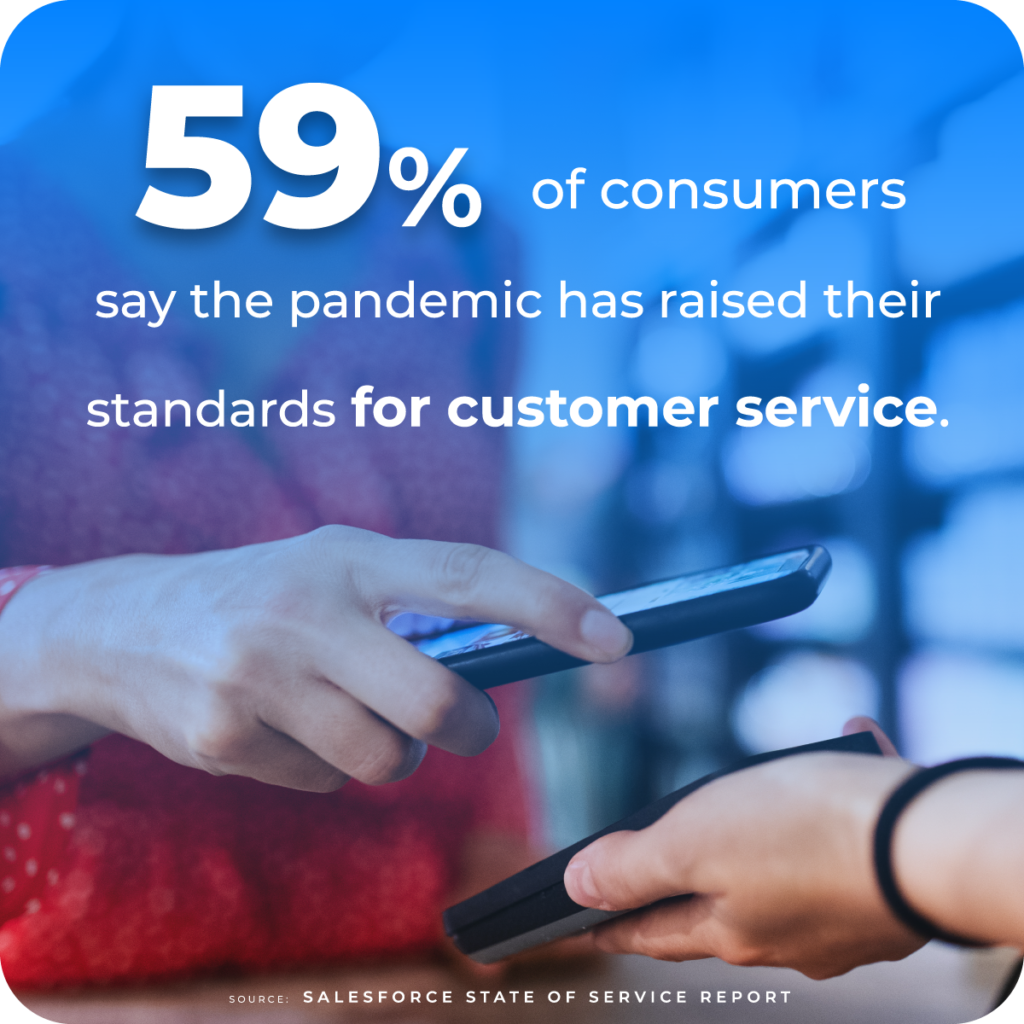
Why? Because customer expectations for great service have never been higher. According to Salesforce’s State of Service report, 59% of consumers indicate the pandemic has raised their standards for customer service.
Consumers demand great service – wherever they shop for your products. And if you don’t deliver, you’ll lose a customer.
Ready to start delivering great service across marketplaces? Read on to learn six ways to optimize your strategy.
Tip #1: Meet (or Exceed) all SLAs (and Shoppers’ Expectations for Speedy Engagement)
Each marketplace offers different ways for consumers to engage with your brand. These methods might include messaging, live chat, reviews, and Q&A – among others. We’ll dive deeper into reviews and Q&A later on in this article.
Oftentimes, marketplaces define service level agreements (SLAs) that brands must adhere to. These SLAs might spell out how quickly a brand must respond to a customer inquiry, as well as how quickly issues must be resolved.
Familiarize yourself with the SLAs of each marketplace you use, and be sure you have a solid plan in place to meet (and exceed) them. Doing so is an important way to stay in good standing with the marketplace.

In addition, providing speedy responses helps you meet (and exceed) the expectations of shoppers. Per Salesforce, 83% of consumers expect immediate engagement when they contact a company, up from 79% just a couple years ago.
But all too often, brands fall short of those expectations. Finally, a speedy response (and a quick resolution to an issue) can decrease the likelihood that a consumer will leave a bad review, which can negatively impact your reputation on the marketplace. But if you do get a negative review, have no fear! See tip #3.
Tip #2: Respond ASAP to Customer Questions Via Q&A
Typically marketplace websites provide a few ways for consumers to ask outstanding questions before making a purchase. Community Q&A forums are particularly popular. Our own research found that 63% of consumers pose questions via Q&A at least sometimes.
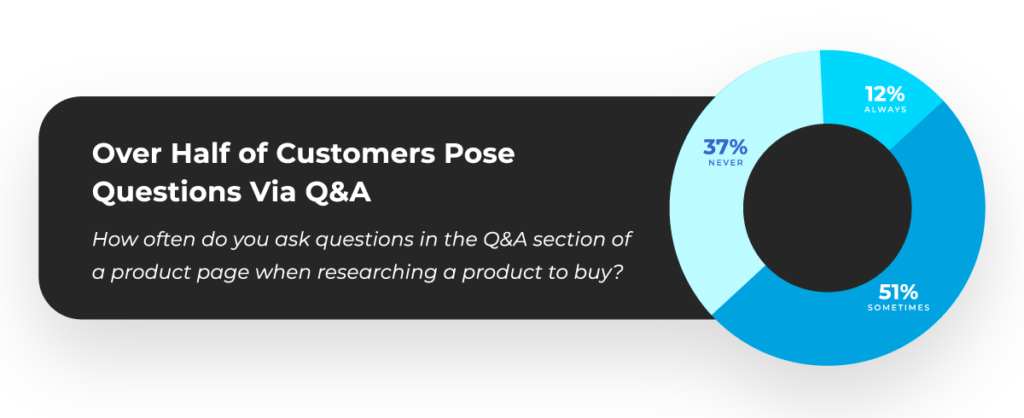
An important way to provide great service on marketplaces is to answer any questions posed on Q&A forums as quickly and accurately as possible. According to Forrester, 55% of U.S. adults are likely to abandon an online purchase if they can’t find quick answers to their questions.
Ideally, brands should post a response to consumers’ questions in real-time, before they’ve had a chance to leave the product page. This might seem impossible. But it’s not. If you use a solution like Reputation Studio from 1440, all Q&A from all channels is consolidated into a single platform, which makes it a lot easier to provide the speedy responses your marketplace shoppers crave.
It’s worth mentioning that some marketplaces, including Amazon, allow previous customers to respond to questions posed via Q&A. This is an effective strategy, as consumers trust others like them. However, it doesn’t mean you’re off the hook on answering. It’s still important to provide a brand response, as it’s an important way to show you care about your marketplace customers – and pay attention to their questions and concerns.
Tip #3: Engage With Reviews, When the Marketplace Allows It
Increasingly, consumers share feedback by writing reviews. Our research found that 74% of consumers would be at least somewhat likely to write a review after a negative experience, and 77% would be at least somewhat likely to contribute a review after a positive experience.
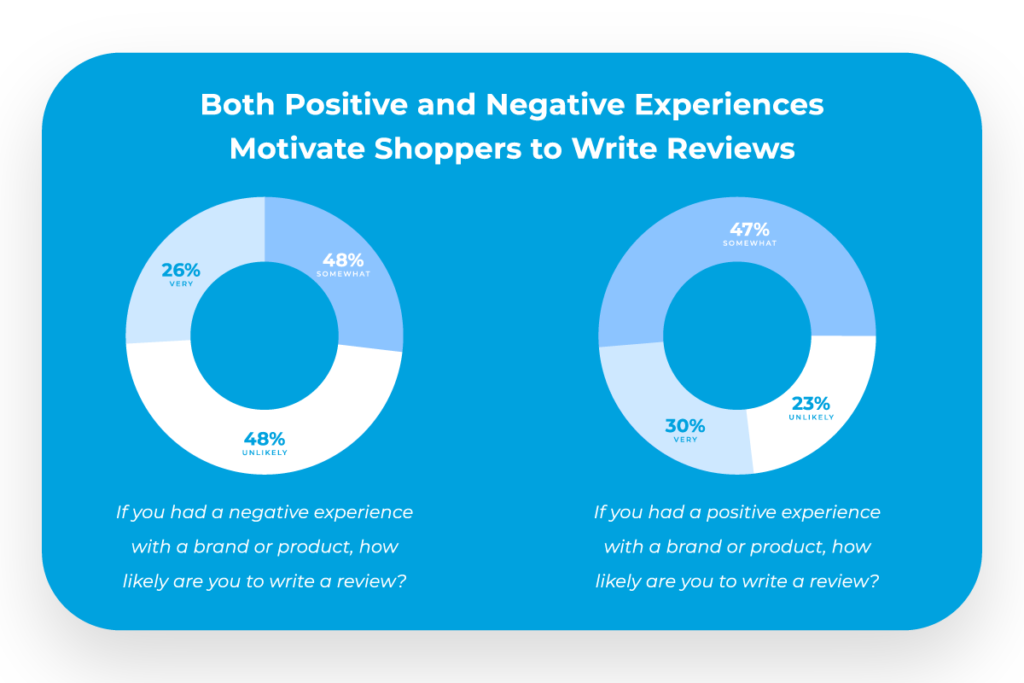
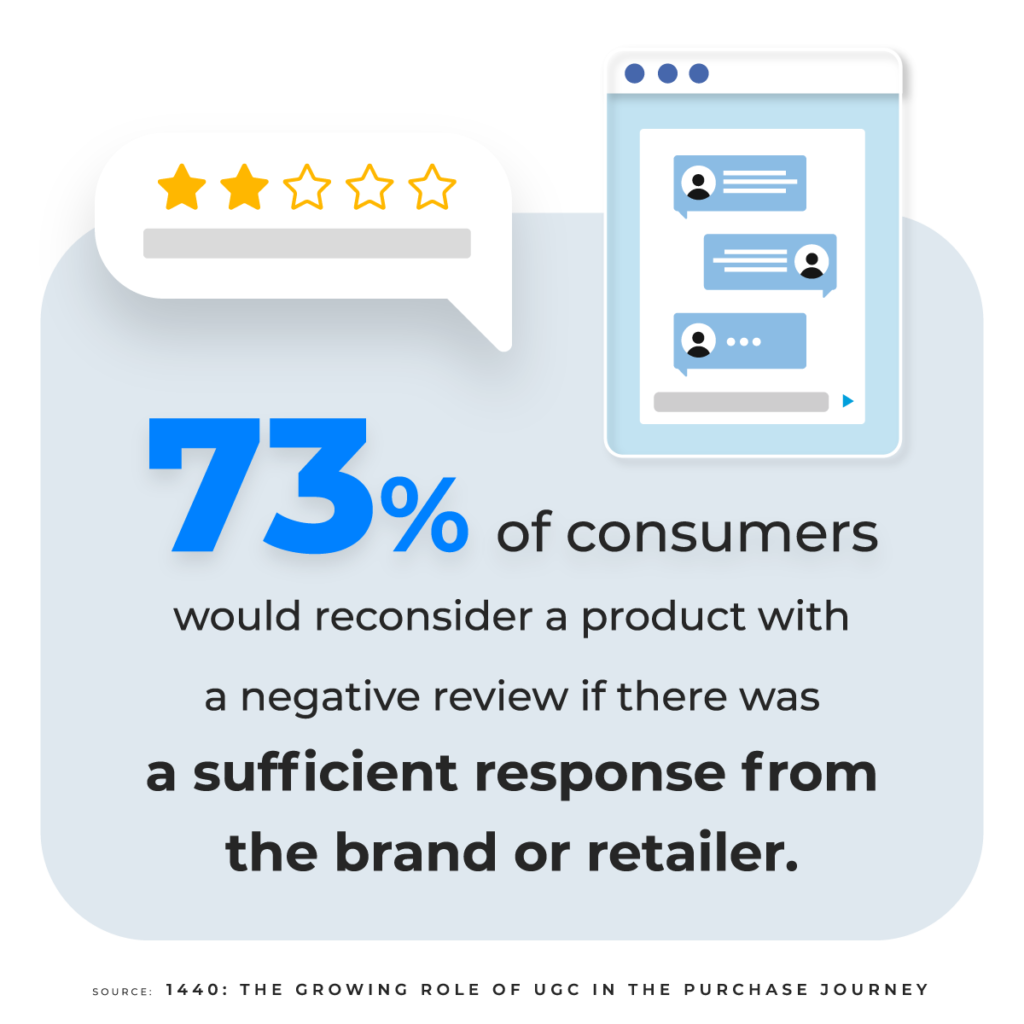
It’s important to monitor reviews across all of your sales channels (including marketplaces) and publicly respond when appropriate…if the marketplace allows it.
Today, 81% of consumers expect brands to respond to negative reviews at least sometimes. Doing so is an opportunity to meet shoppers’ expectations and restore trust. In addition, a thoughtful response to a negative review can show future shoppers you’re a brand that cares about its customers.
And, a great response can convince shoppers to overlook the occasional negative review. Our research found that 73% of consumers would reconsider a product with a negative review if there was a sufficient response from the brand or retailer.
While negative reviews often get top priority, it’s also important to respond to positive reviews on marketplaces. 70% of consumers expect brands to respond to 3 and 4 star reviews at least sometimes. Doing so is an opportunity to make authentic connections with customers, which can lead to long-term loyalty.
If you’re not already, consider consolidating all reviews across channels with a platform like Reputation Studio. With Reputation Studio, customer service agents can monitor and respond to reviews, wherever they were written, from a single platform – right alongside other service channels. You can also set up rules and alerts so the most urgent reviews can get top priority.
Tip #4: Personalize all Communication, When Possible
Consumers don’t want to be treated like just another number. Instead, they expect personalized experiences throughout the purchase journey – including when they’re seeking out service through a marketplace. According to Salesforce, 66% of consumers expect companies to understand their unique needs and expectations. And data from Epsilon tells us consumers are more likely to make a purchase when a brand offers personalized experiences.
But oftentimes, brands fall short. Salesforce research found that a mere 34% of companies generally treat customers as unique individuals. That means 66% treat customers more like numbers, which is exactly what they don’t want.
It’s essential to provide personalized service across all marketplaces. This can be as simple as addressing a customer by name and looking at their purchase activity to help guide your interactions.
Personalized service must also include being able to communicate with customers in their preferred language. This is important if you sell globally, as well as if you’re only selling the U.S. After all, 22% of the population speaks a language other than English at home.
Being able to break down language barriers to communicate with consumers in their preferred language is well worth the effort. A survey from CSA Research found that 75% of consumers say they’re more likely to purchase from a brand again if its customer care is in their language.
But being able to communicate in any language is a pretty tall order. If you use Salesforce Service Cloud, consider using a solution like Translation Studio from 1440, which allows you to quickly and accurately translate just about anything in Salesforce, without leaving the platform. It saves time, eliminates the inaccuracy of manual translations, and allows you to deliver great service and delight customers on any marketplace, regardless of the language they speak.
Tip #5: Take Broad Action on Feedback Received Through Marketplaces
Of course, it’s important to resolve individual customers’ issues through all the marketplaces you sell on. But sometimes, broader action is needed.
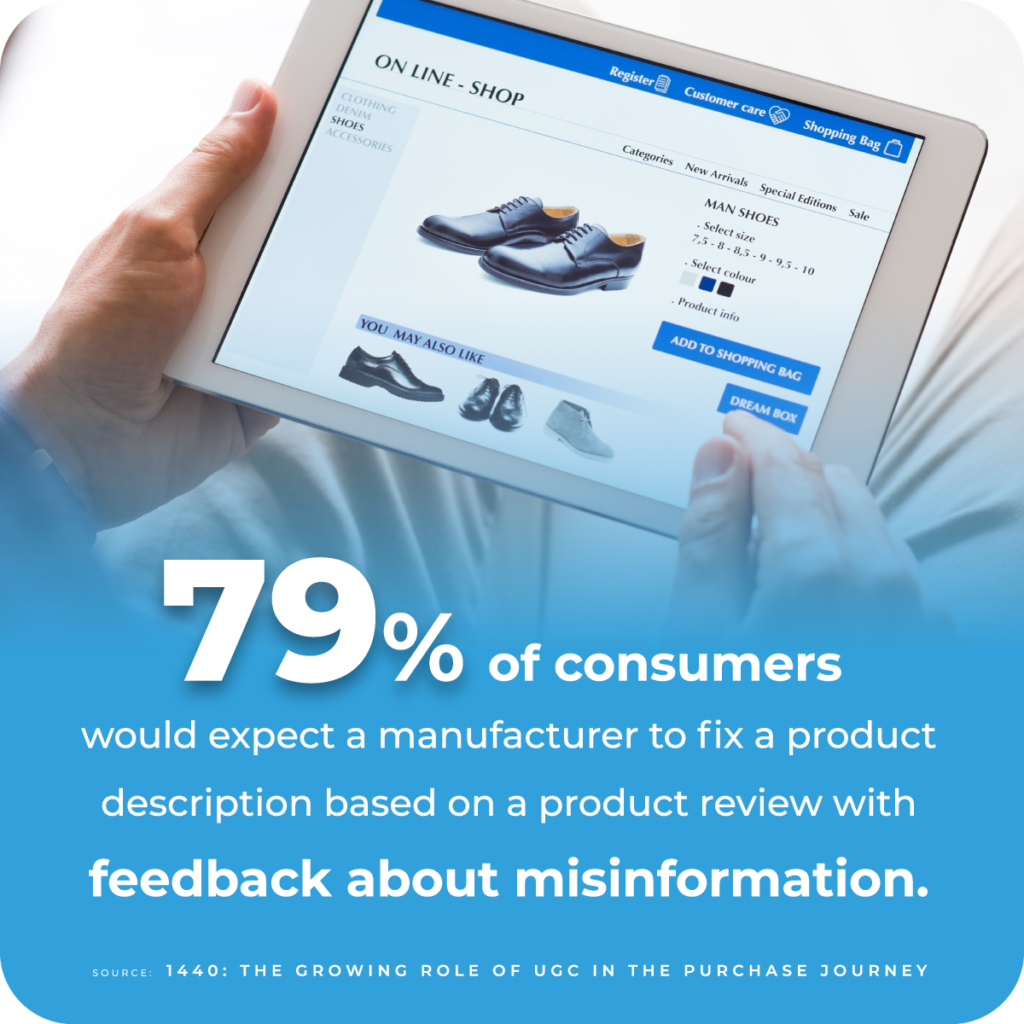
For example, 79% of consumers expect a manufacturer to fix an inaccurate product description based on a product review with feedback about misinformation. So if a review comes through that mentions inaccurate information, be sure to revise the product description appropriately. You’ll meet the reviewer’s expectations. And, future shoppers will have a more accurate picture of what to expect from the product, which will lead to higher satisfaction – and fewer returns.
As another example, you might notice several reviews submitted by marketplace customers that mention a product flaw. You can use that information to take action to fix the problem.
Reviews and Q&A on marketplaces are full of insights that can help you improve products and experiences. But it can be challenging to identify these insights, especially when you’re managing reviews through a number of different platforms.
Reputation Studio’s robust analytics capabilities make it possible for you to holistically analyze reviews across all channels, all in a single platform. You can better understand sentiment at the brand and product level, identify trends in feedback, and shed light on opportunities for improvement.
Tip #6: Manage Orders and Returns Through a Single Platform
If you sell your products through multiple channels, including marketplaces, managing orders and returns isn’t always easy. You might oversell your products, which will lead to frustrated customers. Or, your returns process might be clunky, which will make the shopper rethink another purchase.
Instead, consider centralizing all orders and returns across channels by using a solution like Commerce Studio from 1440. You’ll never have to worry about overselling; you’ll always have an accurate picture of inventory levels, with real-time updates based on multiple channels and activities. And, returns will be seamless for everyone involved, thanks to a self-service returns portal.
By centralizing all orders and returns across channels, your customers will have great experiences, whether they’re shopping through your dot com or a marketplace.
Start Delivering Great Service Through Marketplaces
Winning brands must make it a priority to deliver great service across all channels – including Amazon, Walmart, and all other marketplaces. Even a single slip up can cost you a loyal customer.
Putting these six tips into practice will have a big impact on your ability to deliver stellar service to customers, regardless of where they shop for your products.